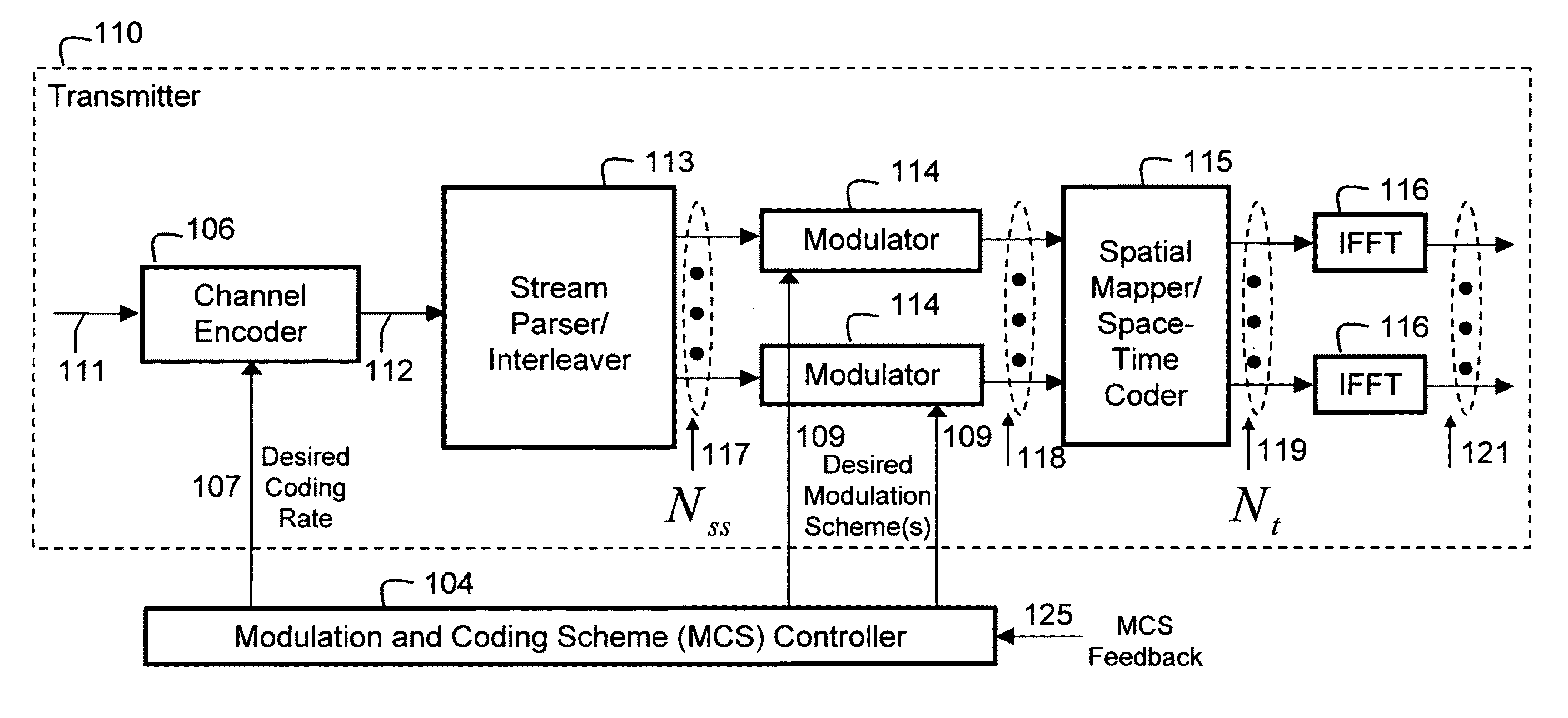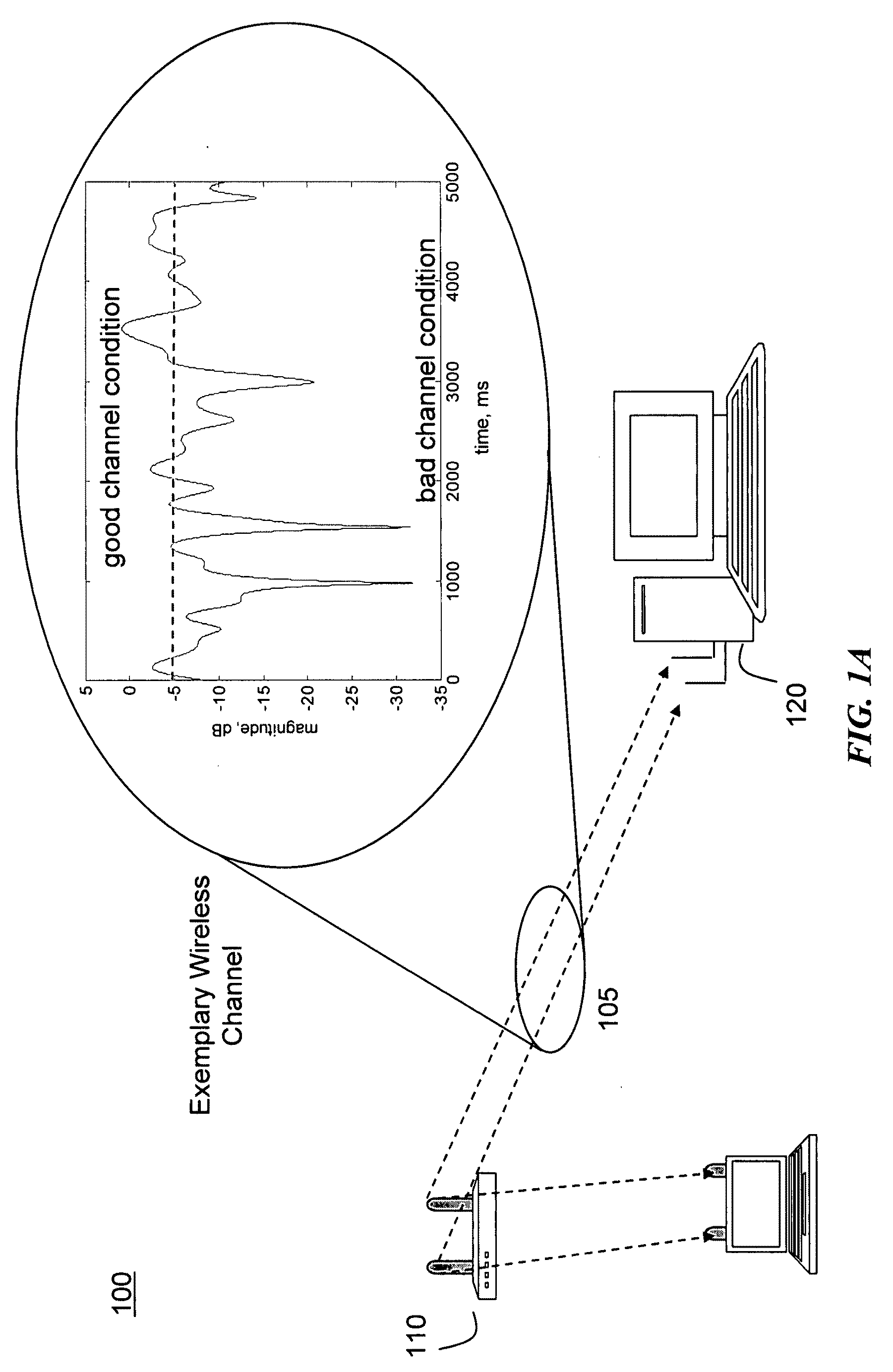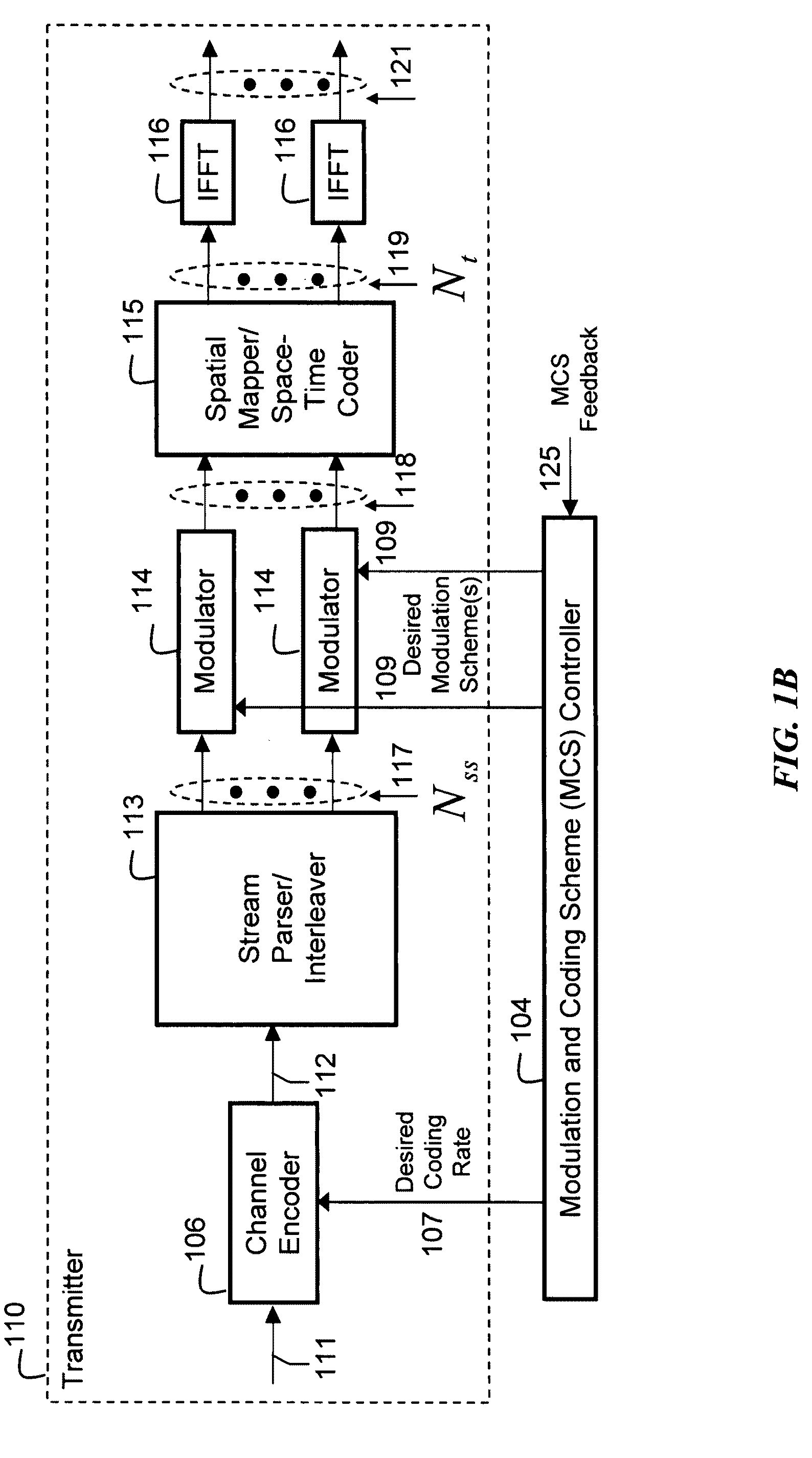Performance-based link adaptation techniques
a technology of link adaptation and performance, applied in the field of signal processing for wireless communications systems, can solve the problems of high inefficiency, lack of rigorous theoretical support, and deviation from the most practical communication system, and achieve the effect of avoiding the deviation from the most practical communication system, and being convenient to us
- Summary
- Abstract
- Description
- Claims
- Application Information
AI Technical Summary
Benefits of technology
Problems solved by technology
Method used
Image
Examples
Embodiment Construction
Overview
[0025]Robust and relatively simple performance-based link adaptation techniques for MIMO-OFDM channels having a common set of channel encoders (on a per data-allocation-unit (e.g., burst) basis) are described herein. These link adaptation techniques account for the relationship between the wireless channel, MCS, and decoder output performance and can dynamically update the MCS according to a performance requirement requested by an application. Although exemplary embodiments of the link adaptation techniques of the present disclosure are described for OFDM multi-carrier systems, one of skill in the art will understand that the link adaptation techniques of the present disclosure need not be limited to OFDM multi-carrier systems, and are suitable for all multi-carrier systems. Further, because MIMO transmission is a generalization of single-transmit and multiple-receive (SIMO), multiple-transmit and single-receive (MISO), or single-transmit and single-receive (SISO) transmissi...
PUM
 Login to View More
Login to View More Abstract
Description
Claims
Application Information
 Login to View More
Login to View More - R&D
- Intellectual Property
- Life Sciences
- Materials
- Tech Scout
- Unparalleled Data Quality
- Higher Quality Content
- 60% Fewer Hallucinations
Browse by: Latest US Patents, China's latest patents, Technical Efficacy Thesaurus, Application Domain, Technology Topic, Popular Technical Reports.
© 2025 PatSnap. All rights reserved.Legal|Privacy policy|Modern Slavery Act Transparency Statement|Sitemap|About US| Contact US: help@patsnap.com



